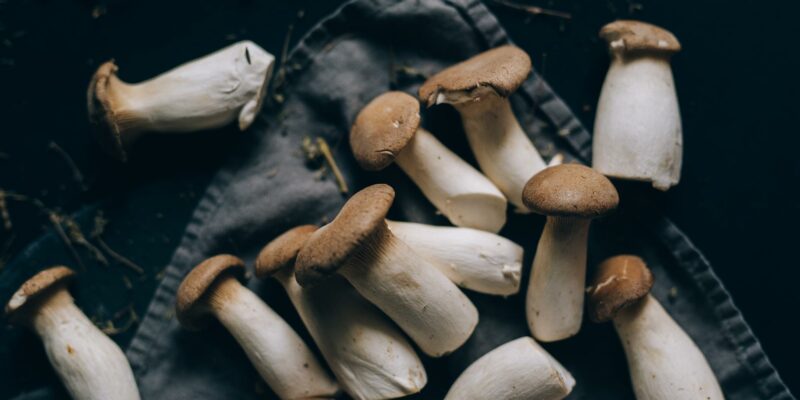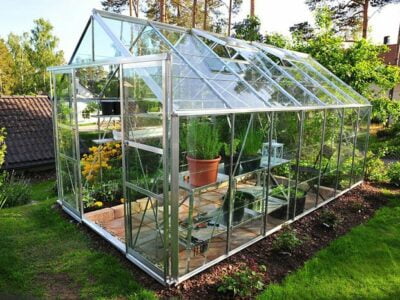If you’ve ever dreamed of starting your own mushroom-farming business but didn’t know where to start, you’ve come to the right place! This guide will walk you through everything you need to know, from choosing the right type of mushrooms, setting up your farm, cultivating your fungi, and harvesting your bounty. Let’s dive into the wonderful world of mushroom farming!
Types of Mushrooms for Farming
There are numerous types of mushrooms suitable for farming, but some are more beginner-friendly than others. Three popular varieties to consider for your business include:
- Oyster mushrooms: Known for their mild flavor and meaty texture, oyster mushrooms grow easily and quickly, making them an excellent choice for beginners. They are also popular in various recipes and are a great source of essential nutrients.
- Shiitake mushrooms: Prized for their unique, umami-rich taste, shiitake mushrooms have a longer growing cycle but offer a high-profit margin due to their culinary popularity.
- Button mushrooms: The most commonly consumed mushroom worldwide, button mushrooms are versatile and have a relatively short growing time. However, they require a larger initial investment and are more labor-intensive.
Choosing Your Setup
Setting up your mushroom farm includes selecting the appropriate growing environment. This will depend on the type of mushrooms you choose and the space you have available. Indoor growing rooms allow for controlled temperature, humidity, and air circulation, indoor rooms work well for many types of mushrooms. They require a larger initial investment but provide more predictable growth conditions. Greenhouses offer more natural light and serve as a middle ground between indoor and outdoor setups. Greenhouses can have modified temperature and humidity controls to suit your chosen mushroom variety. Outdoor patch cultivation is another option. If you have access to an appropriate outdoor environment, some mushrooms, like shiitake, grow well on natural logs. This method requires less investment but is more vulnerable to weather conditions.
Substrates and Cultivation Techniques
Mushroom substrates, the organic materials on which mushrooms grow, vary depending on the species. Here are some common substrates used for mushroom cultivation:
- Sawdust: A popular choice for oyster and shiitake mushrooms, sawdust is readily available, inexpensive, and holds moisture well.
- Straw: Often used for oyster mushrooms, straw is affordable and can be locally sourced in many areas.
- Compost: A nutrient-rich medium, compost is typically used for growing button mushrooms.
For most mushroom varieties, spawn provides the initial inoculation. Spawn is a mixture of mushroom mycelium (the root-like structures) and a carrier substrate, such as grain or wood chips. Inoculate your chosen substrate with the spawn, and then incubate it under the appropriate environmental conditions until the mycelium fully colonizes it.
Maintaining Ideal Growth Conditions
Keep your mushroom farm thriving by monitoring and controlling the following factors:
- Temperature: Varies depending on the mushroom species, but generally ranges from 55-75°F (13-24°C).
- Humidity: Maintain a high humidity level (approximately 80-90%) by misting your growing area or using a humidifier.
- Air circulation and carbon dioxide: Mushrooms produce carbon dioxide as they grow, which must be exchanged for fresh air to prevent stunted growth. Fans or passive vents help maintain proper air circulation.
- Light: Some mushrooms, like oyster and shiitake, require a small amount of natural or fluorescent light to grow properly.
Picking the Perfect Harvest Time
The optimal time to harvest mushrooms varies by species, but there are some general guidelines to follow:
- Oyster mushrooms: Pick when the edges of the caps begin to turn upwards, usually 3-7 days after the first appearance of pins (small mushroom buds).
- Shiitake mushrooms: Harvest when the caps are still slightly convex and the edges are not fully turned down, typically 7-14 days after pinning.
- Button mushrooms: Harvest when the veil under the cap starts to tear away from the stem, around 3-5 days after pinning.
Market Opportunities and Trends
Being aware of market trends in the mushroom industry can help you capitalize on opportunities and make informed decisions about your mushroom farming business. Focus on consumer preferences and emerging trends, such as increased demand for organic and locally grown products, innovative packaging and presentation, or the rise of medicinal mushrooms like cordyceps and lion’s mane.
Quality Control and Post-Harvest Handling
Taking care of your harvested mushrooms is essential for maintaining their quality and freshness. Keep them at an appropriate temperature and humidity level during transportation, storage, and display. Additionally, learning proper handling practices, sterilization techniques, and processing methods will ensure you deliver a consistent, high-quality product that meets the expectations of your clientele.
Local Regulations and Permits
Prior to starting your mushroom farm, familiarize yourself with local and regional regulations for agricultural businesses and maintain compliance with necessary permits. This may include health and safety guidelines, zoning regulations, and guidelines for the use of specific cultivation materials. Understanding and adhering to these regulations will help protect your business and establish credibility within the industry.
Conclusion
Now that you’ve got the basics down, you’re ready to embark on your mushroom farming journey! Remember to research the specific needs of your chosen mushroom species, continuously monitor and adjust their growing environment, and practice patience as they grow and thrive. With dedication and know-how, your mushroom farm will flourish, providing you with a unique and profitable business venture.










Comments